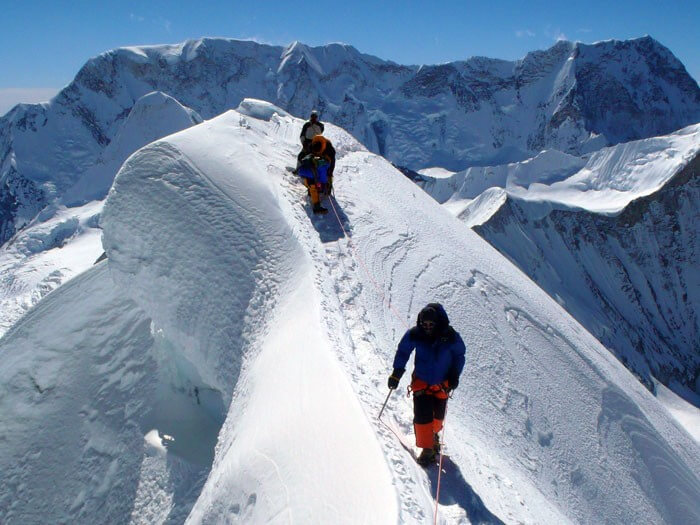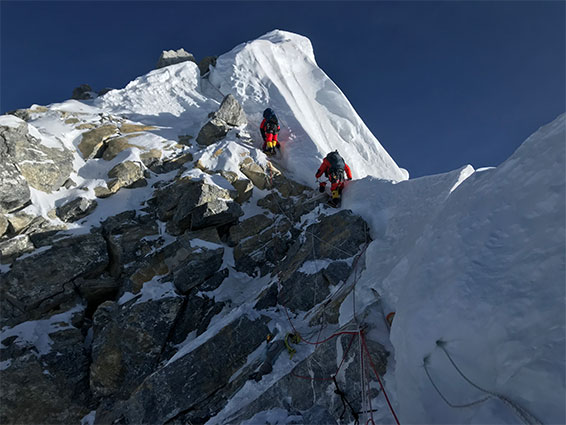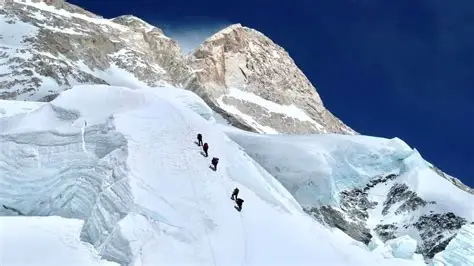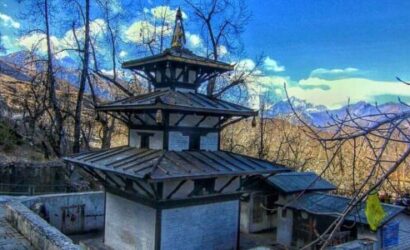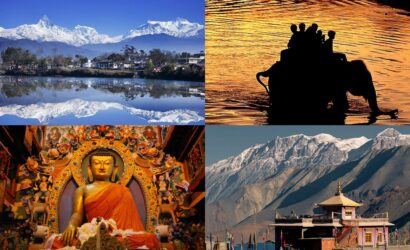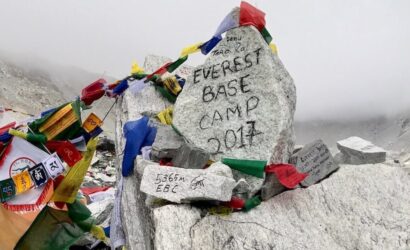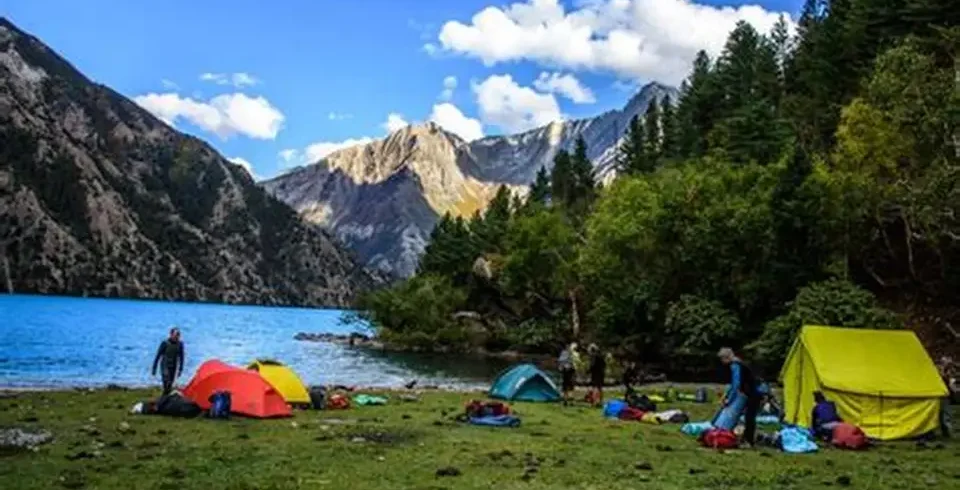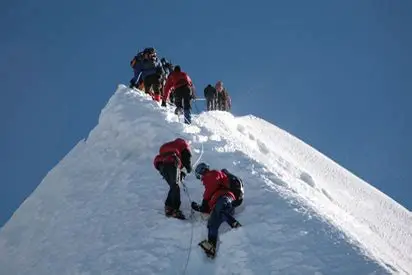Duration: 44N/45D
Price Per Person: $12500
Overview
for 2025 / 2026
Makalu Expedition
The Makalu Expedition is one of the most challenging and thrilling mountaineering experiences in the world. It is the fifth highest mountain in the world, standing at an elevation of 8,485 meters. The mountain is located in the Mahalangur range of the Himalayas, on the border between Nepal and Tibet. The Makalu Expedition requires a high degree of technical skill, physical strength, and mental toughness. It is not for the faint of heart.
History of Makalu Expedition
The Makalu Expedition was first attempted in 1954 by a French team led by Jean Franco and Lionel Terray. However, they were unsuccessful in their attempt to summit the mountain. The first successful ascent of Makalu was made in 1955 by a team of American climbers led by William Siri. Since then, the mountain has been climbed by numerous expeditions from around the world. Despite this, the Makalu Expedition remains a challenging and dangerous undertaking.
Preparing for the Makalu Expedition
Preparing for the Makalu Expedition requires a substantial amount of planning and preparation. The first step is to assemble a team of experienced climbers who are well-equipped to handle the challenges of the mountain. The team must also have a support staff that includes cooks, porters, and other support personnel. The team must also obtain all the necessary permits and permissions from the Nepalese government.
Climbing permits for Makalu are issued by the Department of Tourism in Nepal, and they can be obtained through registered trekking agencies or by applying directly to the Department of Tourism. The cost of the permit varies depending on the season and the size of the expedition team.
In addition to the climbing permit, expedition teams also need to obtain other permits and licenses, such as a trekking permit for the Makalu-Barun National Park and a permit for using a satellite phone. It is important to consult with a reputable trekking agency or a knowledgeable guide to ensure that all necessary permits are obtained before attempting a Makalu Expedition.
The team must also undergo extensive physical training and acclimatization. This involves spending several weeks at high altitude to prepare the body for the rigors of the climb. The team must also have the necessary equipment and gear, including clothing, tents, ropes, and other climbing gear. The team must also have a well-defined plan for the ascent, including a backup plan in case of unforeseen circumstances.
The journey to the base camp
The journey to the base camp of Makalu is a challenging and arduous undertaking. The team must travel through difficult terrain, including steep hills and narrow valleys. The journey can take several days or even weeks, depending on the route chosen. The team must also carry all their equipment and supplies with them, which can be a significant challenge.
The journey to Makalu Base Camp takes place in the Makalu-Barun National Park in Nepal, which is a remote and rugged area with diverse terrain and scattered villages. Here is some information on the villages and terrain that you may encounter on the way to Makalu Base Camp:
- Tumlingtar: The journey to Makalu Base Camp usually starts from Tumlingtar, a small town in eastern Nepal that has an airport. Tumlingtar is located at an elevation of around 400 meters (1,300 feet) above sea level and is the gateway to the Makalu-Barun National Park.
- Chichila: After a short flight from Tumlingtar, the trek begins at the village of Chichila, which is located at an elevation of around 1,980 meters (6,500 feet) above sea level. Chichila is a small Gurung village and is the last inhabited settlement on the trek to Makalu Base Camp.
- Seduwa: From Chichila, the trek continues to Seduwa, a small Sherpa village located at an elevation of around 1,530 meters (5,020 feet) above sea level. Seduwa is a good place to acclimatize before continuing higher.
- Tashi Gaon: The next village on the trek is Tashi Gaon, which is located at an elevation of around 2,070 meters (6,790 feet) above sea level. Tashi Gaon is a Sherpa village and is the last village before reaching the higher elevations of the trek.
- Dobate: From Tashi Gaon, the trek continues through dense forests of rhododendron, oak, and bamboo to Dobate, a small clearing located at an elevation of around 3,500 meters (11,480 feet) above sea level.
- Yangle Kharka: The next stop on the trek is Yangle Kharka, a grazing pasture located at an elevation of around 3,600 meters (11,810 feet) above sea level.
- Langmale Kharka: From Yangle Kharka, the trek continues to Langmale Kharka, another grazing pasture located at an elevation of around 4,410 meters (14,470 feet) above sea level.
- Makalu Base Camp: The final destination of the trek is Makalu Base Camp, which is located at an elevation of around 4,870 meters (15,980 feet) above sea level. The terrain around Makalu Base Camp is rocky and icy, with spectacular views of the surrounding mountains.
Upon reaching the base camp, the team must set up their tents and establish a base of operations. This involves building a kitchen, dining area, and other facilities needed to support the team during the climb. The team must also establish a system for storing and distributing supplies, including food, water, and fuel.
Setting up the base camp
Setting up the base camp is a critical part of the Makalu Expedition. The team must establish a safe and secure location to serve as the base of operations. This involves selecting a suitable site that is sheltered from the wind and provides a good view of the mountain. The team must also ensure that the site is located near a reliable source of water.
Once the site has been selected, the team must set up their tents and other facilities. This includes building a kitchen area, dining area, and other facilities needed to support the team during the climb. The team must also establish a system for storing and distributing supplies, including food, water, and fuel.
Acclimatization and training
Acclimatization and training are critical components of the Makalu Expedition. The team must spend several weeks at high altitude to prepare their bodies for the rigors of the climb. This involves spending time at various altitude levels to allow the body to adjust to the lower levels of oxygen in the air.
During this period, the team must also undergo training in various climbing techniques, including rope work, ice climbing, and glacier travel. They must also practice using their equipment and gear to ensure that they are prepared for any eventuality.
The summit push
The summit push is the most challenging part of the Makalu Expedition. It involves a grueling climb to the summit of the mountain, which can take several days. The team must navigate treacherous terrain, including steep inclines, narrow ridges, and crevasses. They must also battle extreme weather conditions, including high winds, freezing temperatures, and heavy snowfall.
The team must also be prepared to deal with any unforeseen circumstances, such as equipment failure, injury, or illness. They must have a backup plan in place to ensure that they can safely descend the mountain if necessary.
The challenges faced during the expedition
The Makalu Expedition is not without its challenges. The team must deal with extreme weather conditions, including high winds, freezing temperatures, and heavy snowfall. They must also navigate treacherous terrain, including steep inclines, narrow ridges, and crevasses. The team must also be prepared to deal with any unforeseen circumstances, such as equipment failure, injury, or illness.
The thrill of reaching the summit
Reaching the summit of Makalu is a thrilling and exhilarating experience. It is the culmination of months of planning, preparation, and hard work. The team is rewarded with stunning views of the Himalayas and a sense of achievement that is hard to describe. The team must also take care not to get too caught up in the moment and must focus on safely descending the mountain.
The descent and return journey
The descent and return journey can be just as challenging as the ascent. The team must navigate treacherous terrain, including steep inclines, narrow ridges, and crevasses. They must also battle extreme weather conditions, including high winds, freezing temperatures, and heavy snowfall. The team must also be prepared to deal with any unforeseen circumstances, such as equipment failure, injury, or illness.
Upon reaching the base camp, the team must pack up their equipment and gear and begin the journey back to civilization. This can be a long and arduous undertaking, as the team must retrace their steps through difficult terrain. The team must also take care to leave the mountain in the same condition as they found it, respecting the environment and the local culture.
The Makalu Expedition is a challenging and thrilling mountaineering experience that requires a high degree of technical skill, physical strength, and mental toughness. It is not for the faint of heart. However, for those who are up to the challenge, it is a once-in-a-lifetime experience that is hard to forget. The journey to the summit is filled with challenges and obstacles, but the sense of achievement upon reaching the summit is unparalleled. For those who are considering the Makalu Expedition, it is essential to prepare well and take all necessary precautions to ensure a safe and successful climb.
Detailed Itinerary
Day 1-2: Arrival in Kathmandu and rest day
Day 3: Preparation day in Kathmandu, obtaining necessary permits and equipment check
Day 4: Fly from Kathmandu to Tumlingtar, and drive to Chichila
Day 5: Trek from Chichila to Num
Day 6: Trek from Num to Seduwa
Day 7: Trek from Seduwa to Tashi Gaon
Day 8: Rest day in Tashi Gaon for acclimatization
Day 9: Trek from Tashi Gaon to Khongma La
Day 10: Trek from Khongma La to Dobate
Day 11: Trek from Dobate to Yangri Kharka
Day 12: Trek from Yangri Kharka to Langmale Kharka
Day 13: Trek from Langmale Kharka to Makalu Base Camp
Day 14-15: Rest and acclimatization at Makalu Base Camp
Day 16-39: Climbing period, including:
- Establishing higher camps and acclimatization
- Summit attempt(s)
- Descend to base camp
Day 40-42: Trek from Makalu Base Camp to Yangri Kharka, Dobate and Tumlingtar
Day 43-44: Fly from Tumlingtar to Kathmandu
- Day 45: Departure from Kathmandu

